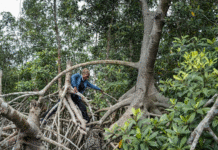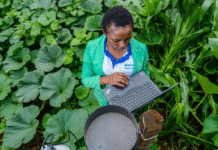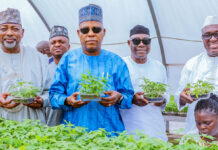Beneath our feet lies a hidden treasure—soil, the Earth’s largest carbon repository, holding approximately 2,400 billion tons of carbon in the first two meters below the surface. In the face of climate disruption, understanding and harnessing soil’s capacity for carbon storage is crucial. While soils alone cannot single-handedly address rising greenhouse gas concentrations, adopting specific farming practices can significantly contribute by preserving substantial carbon stocks underground and restoring degraded lands.
Carbon Entry into Soils
The journey begins with photosynthesis, where plants absorb atmospheric carbon dioxide (CO2), converting it into carbon-rich molecules through solar energy. This captured carbon enters the soil through plant roots, leaves, and decomposing crop residues. Maintaining high carbon stocks in ecosystems like forests and wetlands is essential, and converting these areas into farmland can result in significant carbon loss—up to 25% or more.
Agricultural Practices for Increased Soil Carbon Stocks:
Several farming practices contribute to enhanced soil carbon stocks, collectively forming “conservation agriculture.” Notable practices include:
No-till or Limited-tillage Farming:
- Involves sowing crops without plowing the entire field.
- Reduces soil erosion, slows organic matter decomposition, and preserves soil biodiversity.
Permanent Soil Cover:
Utilizes mulch from crop residues or living plant cover between crops.
Protects against erosion, traps carbon, and supports soil wildlife.
Crop Diversification:
- Implemented through crop rotation or intercropping.
- Reduces bioaggressors and diseases, enhances productivity, and fosters carbon entry through diverse crop roots.
Results from Field Experiments
Long-term experiments conducted in Cambodia and Zimbabwe highlight the effectiveness of combining these practices:
Cambodia:
- Combining no-till, direct sowing, permanent soil cover, and crop rotation led to a significant increase in soil carbon, promoting deep root systems and long-term carbon storage.
Zimbabwe:
- No-till practices alone showed limited benefits, with potential carbon loss.
- No-till with mulch and crop rotation resulted in increased carbon stocks, particularly in the surface horizon.
Challenges in Implementing Practices
While these practices offer promise, challenges exist, especially in regions like Zimbabwe with low-input, mixed crop-livestock systems. Dilemmas arise regarding the use of crop residues for livestock feed or soil cover. Balancing these considerations demands organization, time, and energy from farmers.
Beyond Climate Mitigation
The benefits extend beyond climate mitigation, impacting soil fertility, crop productivity, erosion reduction, nutrient availability, and water conservation—crucial factors for farmers in the Global South facing the brunt of climate disruption.
Conclusion: Harnessing soil’s potential as a carbon sink requires a holistic approach, combining various agricultural practices tailored to specific contexts. As we strive for sustainable agriculture, understanding and implementing these practices not only mitigate climate disruption but also address critical challenges faced by farmers worldwide.
















 The African Research (AR) Index is a comprehensive scholarly directory and database focused explicitly on journal publishers that publish and disseminate African research.
The African Research (AR) Index is a comprehensive scholarly directory and database focused explicitly on journal publishers that publish and disseminate African research.

